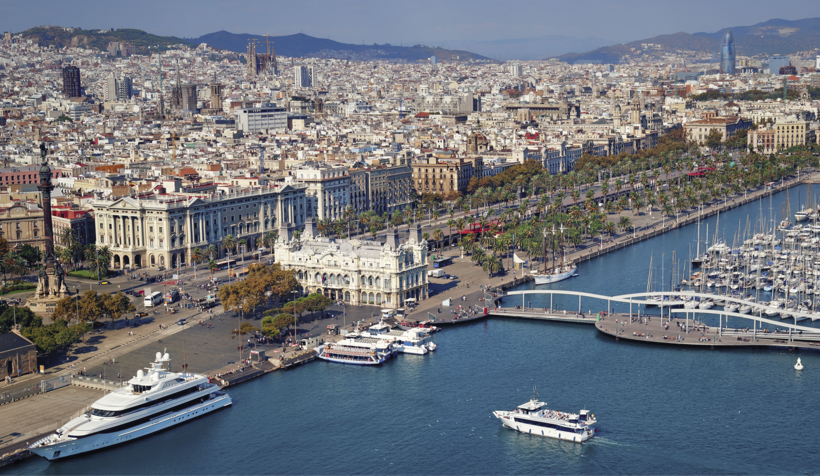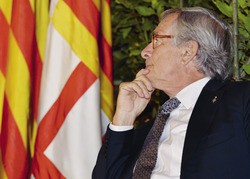Solar City
In recent years, Barcelona has scored higher and higher in ‘smart city’ rankings due to its innovative solutions in solar energy, electric vehicle adoption, and bold experiments in public-private collaboration. The mayor of Barcelona, Xavier Trias, tells BRICS Business Magazine what these changes are all about.
Why do you support the global ‘smart city’ movement? Why do you think this is important?
As Mayor of Barcelona, I firmly believe that a ‘smart city’ strategy is essential to foster economic progress and improve people’s wellbeing and quality of life. We support the main ideas that this movement promotes because it means moving towards a provision of better public services, a more sustainable social, economic, and urban development model, and more efficient management of city resources. Moreover, we understand technology to be the urban revolution of the 21st century, the main enabler for the transformation of city management and planning.
There are different definitions of a ‘smart city.’ Which one do you use?
In Barcelona, being smart is about always finding the best way to reach our goals and, in our case, our main priority is to develop a new city model for the 21st century where economic and social progress go hand-in-hand.
This implies promoting efficiency and sustainability within the city by enhancing coordination among different departments and promoting cross-cutting solutions, innovating, and learning from others to always find the most suitable solution to each urban problem and putting these technological developments at the service of the people.
Does your scientific background as a medical doctor help you understand what technological solutions can and should be put into place in Barcelona?
Yes, of course. From the beginning of my career as a doctor, I understood that it’s essential to place new technologies at the service of the people to improve their wellbeing and quality of life. In Barcelona, we develop innovative solutions with sensors and mobile applications, in areas as diverse as security, public transport, cleaning, lighting, parking, management of waste and water, and health and social care.
Barcelona was awarded the 2014 Mayors Challenge Grand Prize for Innovation by Bloomberg Philanthropies to create a digital and community trust network to combat elderly isolation. The project, VinclesBCN, utilizes tablets and mobile phones to facilitate member communication and assistance. It combines the informal care of family, friends, and neighbors with the expertise of formal caregivers in health and social services.
How do history and Barcelona’s unique architectural heritage interact with the newest technological solutions? Don’t these things contradict each other?
Far from contradicting each other, they actually reinforce one another. Technological solutions help to improve the living conditions in the oldest neighborhoods of the city. Since we are not building a city from scratch, we need to design solutions to our challenges in harmony with our unique architectural heritage. This doesn’t mean that it has to have a negative visual impact on them. The Born neighborhood, for example, is a test bed of smart solutions and is one of the best examples of how technology is integrated into everyday life and respects the area’s atmosphere and heritage.
What technological innovations in Barcelona do you personally consider to be the most interesting/important/promising today?
The solutions we are testing and deploying in Barcelona are all aimed at improving people’s quality of life through more efficient and sustainable management of the city resources and service provisions. Within Barcelona’s Smart City Strategy, we have 22 programs, including initiatives ranging from Smart Water Management to Smart Mobility or Open Government.
Although most of these programs are based on technological innovations, there are three main programs that are pivotal: the Telecommunications Network, Urban Platform, and Smart Data programs. These programs have the greatest potential to be truly transformative since they are becoming the foundation for the development of many other solutions.
Is there the potential of introducing new technological solutions in the security sphere?
The City Council is interested in exploring new technological possibilities in the sphere of security and is already in talks with security companies to explore new collaboration possibilities.
What will change in Barcelona in the coming three to four years?
As Mayor, I understand the city as a network of integrated elements. This holistic approach aims to challenge the traditional discrete functional silos in which cities are typically divided, just as Barcelona aims to progressively evolve to a coordinated system where information flows more freely. This would allow city officials to make the best possible decisions.
In Barcelona, we also realize the potential that technological solutions and international collaboration will have in changing this. That is why we are building public-private partnerships and supporting international collaboration through organizations like the City Protocol Society and with active participation in international city networks.
What do you think of Boyd Cohen’s ‘smart cities’ ratings and Barcelona’s place in it?
Barcelona actively promotes open government and open data, and Professor Cohen’s annual ranking is one of the clearest examples of that. As one of its participating cities, we provide the most up-to-date information from all the different departments within the City Council. We believe that Barcelona is among the smartest cities in Europe and worldwide, precisely because of its holistic approach to city development, which is proven by this ranking across six different criteria (environment, mobility, government, economy, people, and quality of life).

Are there any benchmark cities that are models for Barcelona?
Despite our different characteristics, all cities face the same challenges these days, and it makes perfect sense to try to solve them in a collaborative way, regardless of borders. We know that we can learn from many other cities, find synergies, and establish common approaches to similar problems. This is one of the reasons why Barcelona strongly supports the City Protocol Society’s vision.
To what extent is Barcelona’s experience universal, in your opinion? Can it be ‘translated’ into other languages and used in other countries?
Barcelona is constantly receiving international delegations, not only during city events but also throughout the year. These delegations are interested in learning about our city’s experience, our vision, and our projects, and they typically ask for advice to replicate them in their cities.
Moreover, one of the ways in which Barcelona is actively participating in the City Protocol Society is by sharing its projects and approaches, which have the potential to transform cities worldwide. Thus, scalability and replicability are two of the most important criteria so that they can be discussed, shaped and, ideally, adopted by other cities.
Google’s founders say that the problem for many big corporations is that their CEOs make short-term plans and leave their positions after about only four years, while big projects need about 20 years. Is it the same in city planning?
Barcelona’s aim to be a ‘smart city’ is strongly based on long-term thinking – you cannot change a city within a mayoral term. You have to get results in the short term, but also set goals for the medium and long term. We are working to achieve a deep urban transformation that, of course, will take time and involve projects and plans designed for the longer run.
How do you picture an ideal city? What should it be like in terms of technology and everyday life?
The city is a social dream designed to make our life easier, healthier, happier, and more affordable. We are working to turn this dream into a reality by building a smart city that is locally self-sufficient and globally connected – a zero-emission city with productive neighborhoods, designed at a human scale for living and working in the same area, and where people can move easily by foot, public transport, bike, or electric vehicle.
BARCELONA’S ‘SMART CITY’ INITIATIVES
Barcelona is very serious in its smart city strategy. It has dozens of smart city projects in different areas – public and social services, the environment, mobility, the economy and business, research and innovation, communication, infrastructure, tourism, and citizen involvement. Here are some of the most interesting projects:
Ecology
Barcelona is implementing the LIVE Barcelona (‘Logistics for Electric Vehicle Implementation’) program, designed to boost electric transport in the city. To date, there are around 250 electric charging points, some 500 hybrid taxis, 300 public electric vehicles, 130 electric motorbikes, and 400 private electric vehicles on its streets. It also has a bike-sharing project with more than 6,000 bikes.
In 2000, Barcelona introduced a solar thermal ordinance that makes it compulsory for new buildings to use solar energy to supply 60% of running hot water.
Smart mobility
The city has one of the largest free public Wi-Fi networks in Europe: there are 461 access points at 193 municipal facilities and at 276 street sites. To navigate the city using Wi-Fi, there is a special portal called Apps4Bcn (www.apps4bcn.cat), providing all kinds of applications that can help its users discover new places, learn about events or campaigns held in the city, and much more.
Moreover, there is a cross-city program called Barcelona Contactless that provides local information via access points (with QR-codes, for example) spread throughout the city. It tells visitors and locals about the area they are in at the moment.
Social care
More than 70,000 elderly Barcelonans a day use Telecare service. A special device is installed in the individual’s home that connects them to a social care call center with the press of a button.
This year, Barcelona won the Mayors Challenge Grand Prize for Innovation and €5 million ($6.4 million) toward its proposal to create a digital network of family members, friends, neighbors, social workers, and volunteers who make up ‘trust networks’ for elderly residents.
Education
A simple but innovative way of socializing schoolchildren, there are school routes painted on pedestrian crossings and sidewalks that children can use to find their way to and from school.
mSchools is an educational program designed to get secondary-school students to use mobile technology while studying in the classroom.
Fabrication Laboratories is a set of open spaces where one can learn the basics of digital fabrication, as well as anything else about science and technology, in an experimental and entertaining way.
Open government
The Barcelona City Council provides public data so that everyone can access and use it. The information provided ranges from the age of cars in the city to bakery supply policies, and includes much more.
mobileID app makes it possible to access government services and complete many administrative procedures via smartphone. Finding a car that was towed, learning when and where to vote, and getting copies of tax documents are some of the things that can be done with this app. Another useful e-government app is ApparkB that allows users to pay for car parking instantly via smartphone.
Innovation hub
Gaudi’s city also boasts an innovative district called 22@Barcelona. It’s a ‘smart city campus,’ or a cluster where companies, universities, entrepreneurs, and researchers can work together to create new technological solutions for the city.












